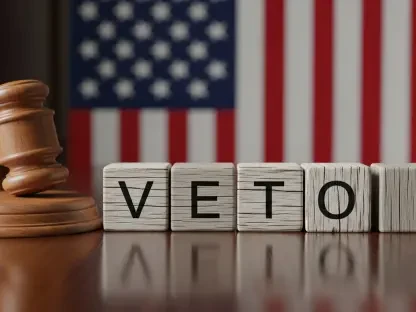The comic book industry is facing a significant shake-up as Diamond Comic Distributors, the longstanding giant in the distribution market, has filed for bankruptcy. Across the United States, comic book publishers and shops are now grappling with a new reality, filled with uncertainties and operational disruptions. Diamond’s bankruptcy filing underscores the fragility of the comic distribution system and highlights deep-seated issues that have been brewing for years. This situation has hit a nerve within the industry, as Diamond’s role as the primary distributor has left many stakeholders contemplating their next steps amidst an ever-evolving landscape. The development has also sparked conversations about business risks, legal safeguards, and the future of comic book distribution models.
Financial Turmoil and Inventory Concerns
Diamond Comic Distributors is disbanding its operations in an attempt to repay debts. This process involves selling off inventory from 128 creditors, including industry heavyweights like Marvel and DC Comics. The creditors find themselves in a challenging position, as the inventory held by Diamond is crucial to their business operations. The action has ignited a debate on consignment inventory practices and the need for legal protection within such arrangements. Many publishers are now reflecting on the importance of securing inventory rights through legal documentation, such as the U.C.C.-1 financing statement, which signifies an interest in the debtor’s property. The omission of this legal measure has left publishers vulnerable, raising awareness about inventory management and legal protocols in business operations.
Complicating matters further is the confusion surrounding the management transition from Diamond to its new owner, Ad Populum. Despite the change in ownership, previous management decisions continue to impact the inventory sale process. Ad Populum’s acquisition of financially troubled companies, including Diamond, positions the entity in a contentious spotlight. Amidst these corporate maneuvers, the industry is witnessing a significant shift in distribution strategies and partnership dynamics. The transition reflects not only Diamond’s struggle but also a broader trend of evolving business practices within the industry. Publishers and retailers are actively exploring alternative distribution partnerships, seeking more stable and transparent arrangements. This reassessment signifies a critical turning point for the comic distribution sector and its stakeholders.
Publisher Reactions and Communication Struggles
The bankruptcy filing has prompted diverse reactions from publishers, some of whom are challenging Diamond’s claims over their inventory. Entities such as Fantagraphics and FairSquare Graphics have labeled Diamond’s dealings as dubious, arguing that their products were consigned, not owned outright by Diamond. This tension sheds light on publisher-distributor relationships and the underlying trust that supports them. Several publishers have made moves to halt shipments to Diamond, citing unpaid debts and a lack of clarity in communications from Ad Populum. This cessation of shipments marks a substantial shift in the comic book landscape, as former Diamond partners seek to stabilize their operations under novel management structures. Publishers are increasingly voicing their dissatisfaction, drawing attention to communication gaps and the need for an accountable distribution framework.
The industry is facing communication challenges amplified by transition uncertainties. Diamond’s change in ownership has compounded this situation, with Ad Populum emerging as a significant player in the discourse. The inability to provide clear information about payments and inventory status has driven publishers to reconsider their engagement with Diamond. Fantagraphics, in particular, has been proactive in advising retailers not to place orders until more clarity is established. As publishers pivot toward alternate distribution routes, they cultivate adaptive strategies necessary for sustaining their business amidst industry disruptions. Transparent practices and cooperative communication channels stand out as vital components for rebuilding trust and ensuring consistent business operations.
Shifting Distribution Models and Legal Implications
The article highlights the changing dynamics in comic distribution models, fueled by Diamond’s bankruptcy and wider industry concerns. It reports on the contemporary shifts arising from Diamond losing DC Comics as a major client due to disagreements over shipping policies. This transition epitomizes existing tensions and compels stakeholders to rethink the reliability of conventional distribution frameworks. As publishers and retailers navigate this labyrinth, they brush against intricate business risks and financial management challenges. The emergence of Ad Populum as a key distributor has not only restructured operational models but also intensified scrutiny on consignment arrangements. Legal experts emphasize the importance of safeguarding inventory with proper documentation to mitigate risks and ensure compliance in distribution agreements.
The evolving landscape beckons stakeholders to address the consignment model’s vulnerabilities. The necessity for implementing legal safeguards, such as U.C.C.-1 financing statements, has gained urgency in current discussions. Legal advisors are instrumental in guiding publishers and retailers through these turbulent times, presenting informed perspectives on secure business engagement and inventory protection. The potential legal showdown between publishers and Diamond reveals broader lessons on business risk management and the fragility of consignment frameworks. Publishers are considering litigation paths to recover their consigned inventory, underscoring an industry-wide call for solidified agreements and refined distribution practices.
Strategic Adaptations and Future Insights
The comic book industry is currently experiencing a major upheaval due to the bankruptcy filing of Diamond Comic Distributors, a long-established leader in comic distribution. This has sent shockwaves through the industry across the United States, leaving publishers and comic shops in a state of uncertainty and operational disarray. Diamond’s decision to file for bankruptcy not only exposes vulnerabilities within the comic distribution framework but also highlights persistent, underlying problems that have been developing over the years. With Diamond traditionally playing a pivotal role as the primary distributor, many involved in the industry are now left deliberating their forthcoming strategies in this continually shifting environment. This upheaval has not only stirred conversations about inherent business risks but also led to discussions on the necessary legal protections and the future trajectory of comic book distribution practices. The industry must now explore innovations and alternatives to navigate these tumultuous changes successfully.









